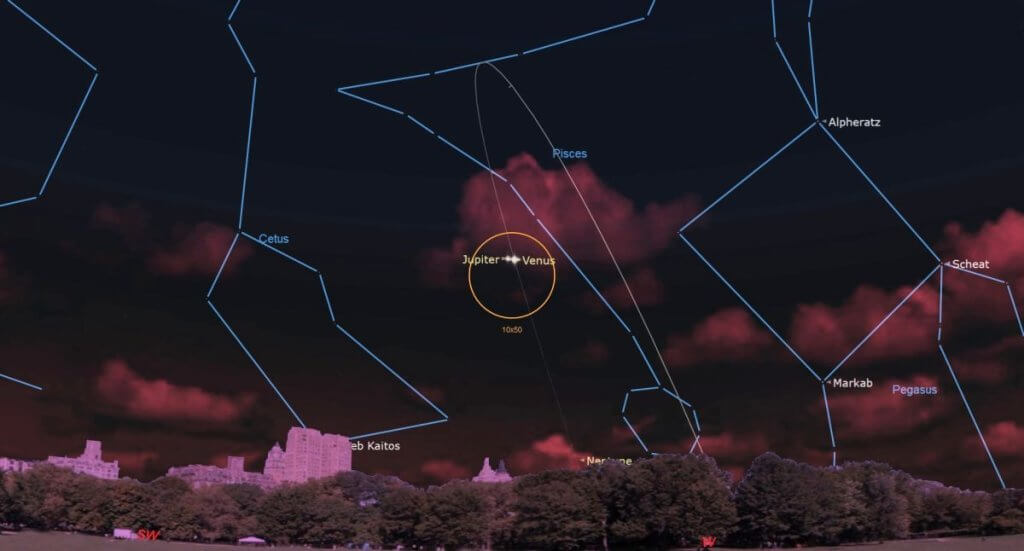You can watch two brilliant planets shining beside each other in the sky this week without leaving your home.
The online Virtual Telescope project will broadcast the two brightest planets in our sky — Venus and Jupiter — when they are just half a degree apart in the night sky. (Your clenched fist held at arm’s length covers about 10 degrees of sky.)
The broadcast starts, weather permitting, at 1:30 p.m. EST (1830 GMT) on both Wednesday (March 1) and Thursday (March 2). We will carry the streams here at Space.com on both days, courtesy of the project’s website (opens in new tab).
“A conjunction involving planets Venus and Jupiter is always spectacular: after the moon, they are the brightest objects in the night sky,” Virtual Telescope founder Gianluca Masi wrote on the event’s webpage (opens in new tab). The planets will be visible from Rome, where he’s streaming from, shortly after sunset, Masi added.
Related: The 12 best night sky events to see in 2023
Venus and Jupiter have been slowly encroaching on each other from Earth‘s point of view for weeks; for example, at the beginning of February they were roughly 30 degrees apart in the sky.
It’s common for planets to pass close to each other from our perspective, although the event is pretty no matter how often you see it. The major planets, the moon and the sun all move along an imaginary line in Earth’s sky known as the ecliptic. That’s because the plane of our solar system is relatively flat, and most larger objects are tilted to almost the same number of degrees to our sun.
For more information on planet-spotting, consult our guide about when, where and how to see the planets in the 2023 night sky.
Elizabeth Howell is the co-author of “Why Am I Taller (opens in new tab)?” (ECW Press, 2022; with Canadian astronaut Dave Williams), a book about space medicine. Follow her on Twitter @howellspace (opens in new tab). Follow us on Twitter @Spacedotcom (opens in new tab) or Facebook (opens in new tab).

